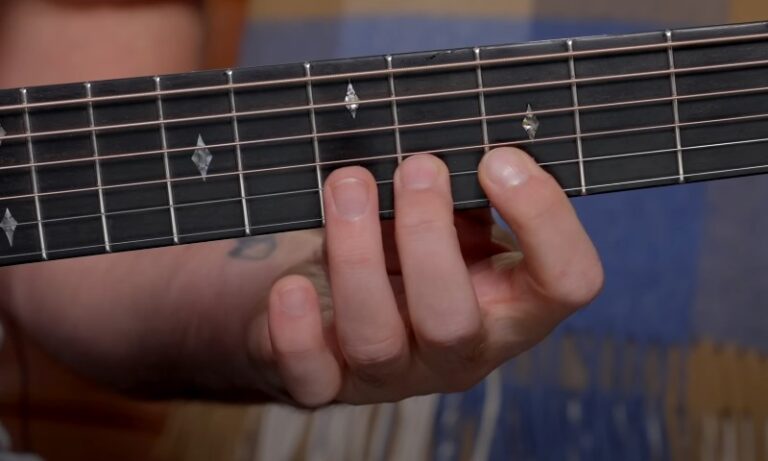Kids pick up interests fast, but how can you tell when something is more than a passing curiosity? Many parents notice their child strumming rubber bands on a shoebox or tapping along to music and start wondering if guitar lessons make sense. Some kids beg for an instrument, while others seem drawn to music but never say much about it.
Parents can pick up some simple tricks too. Learning a few basics will help guide a child in the right direction, making lessons more effective. Even small efforts, like keeping rhythm or recognizing simple chords, can build confidence. Private instruction is another way to get ahead.
Taking time to improve your skills with a private guitar tutor makes it easier to support a child’s musical progress without feeling lost in the process.
Some clear signs will tell you if the time is right. Instead of guessing, look for practical indicators that show a child is ready to start learning guitar.
1. Interest That Goes Beyond a Passing Phase

Kids get excited about plenty of things, but some interests fade fast. One day, they want to be an astronaut. The next, they are done with space and moving on to dinosaurs. Music is different for some kids. Instead of a short-lived obsession, they keep coming back to it.
Signs of lasting interest include asking about guitars regularly, pretending to play one, or getting excited every time they see someone with a guitar. If a child brings up lessons on their own or tries to mimic guitar playing, they may be serious about learning. Parents who notice this can encourage the interest by exposing them to more music, showing them different types of guitars, or even letting them hold a real one.
2. Attention Span That Can Handle Short Lessons
Guitar lessons require focus, even for beginners. Kids do not need to sit still for hours, but they should stay engaged for at least 15-20 minutes without losing interest. Some children naturally have longer attention spans, while others need activities broken into smaller parts.
Ways to Test a Child’s Attention Span
- See if they can follow instructions during crafts or puzzles.
- Notice how long they stay focused when drawing or building with blocks.
- Try short music-related activities, like clapping rhythms or pressing strings on a guitar.
A child who can stick with an activity and follow simple instructions will likely have an easier time picking up the basics of guitar. If focus is an issue, parents can start with fun, low-pressure activities to gradually build up attention.
3. Finger Coordination and Strength Matter More Than Age

A child’s hands do not need to be big, but they do need to be capable. Pressing strings, sweeping, holding a pick, and switching between notes require more than excitement—they take control. Some kids develop this naturally through play, while others need a little practice before diving into lessons.
Some quick ways to check:
- Can they press buttons on a remote without using their whole hand?
- Do their fingers move independently when tapping a surface?
- Can they grip a marker lightly without tensing up?
If hands tire out quickly or fingers move all at once, guitar might feel frustrating early on. Parents can introduce small activities to strengthen fine motor skills, like picking up small objects with fingertips, pressing putty, or even snapping fingers. Small guitars and softer strings also help ease the transition.
4. Willingness to Follow Instructions Without Resistance

Guitar lessons are fun, but they come with structure. A child who enjoys figuring things out but refuses to follow directions may struggle with formal lessons.
Some independence is great, but a complete disregard for guidance will make progress difficult.
Listening Skills Play a Key Role
A child does not need to be perfect at following rules, but they should be able to listen and apply instructions. If they can copy a simple pattern, repeat a basic rhythm, or adjust their grip when shown how, they will likely handle lessons well.
Parents can test this by giving step-by-step directions for small tasks, like arranging toys in a certain order or clapping a rhythm for them to repeat.
Patience Will Make Learning Easier
Every beginner hits frustrating moments, but some kids have the patience to push through, while others shut down. If a child quits instantly when something is not easy, they might need more time before starting lessons.
Encouraging small challenges, like finishing a puzzle with a few tricky pieces, can help build persistence.
5. Enjoys Music and Recognizes Melodies

Some kids have a natural connection to music. They hum along to songs, tap rhythms on tables, or react with excitement when a favorite tune plays.
A strong interest in music makes learning guitar easier because the child already understands sound in a meaningful way.
Recognizes Patterns in Music
A child who picks up on melodies or remembers lyrics after hearing a song a few times shows musical awareness. If they notice when a song speeds up, slows down, or shifts in tone, they will likely grasp guitar basics faster.
Parents can test this by playing a song and asking if they hear changes in volume or rhythm.
Connects Emotionally with Music
Some children react deeply to music. They move along to beats, express emotions through songs, or feel drawn to certain instruments. If a child lights up when hearing guitar-driven songs, they may already be imagining themselves playing.
Giving them a chance to explore that connection with real lessons can be a rewarding next step.
6. Shows Patience When Learning New Skills
A child who gives up immediately when something feels difficult will struggle with guitar lessons. Learning an instrument requires effort, repetition, and patience.
If a child expects to play perfectly on the first try, frustration will take over quickly.
Handles Small Challenges Without Quitting
Kids who enjoy solving puzzles, building structures, or working through small challenges often have the patience needed for learning an instrument. If they can stick with a task, even when mistakes happen, they will have an easier time developing guitar skills.
Parents can watch how a child reacts when facing something unfamiliar—do they try again, or do they walk away?
Accepts That Improvement Takes Time
Some children expect instant results. If they struggle with tying shoes or stacking blocks but refuse to keep trying, they may not be ready for an instrument yet.
Encouraging activities that require persistence, like drawing a detailed picture or practicing a simple dance move, can help build the patience needed for guitar lessons.
FAQs
Bottom Line
Guitar lessons can be a great experience, but timing matters. Interest, focus, and coordination all play a role in making learning enjoyable instead of frustrating. Parents who pay attention to these signs will have a better sense of when to start.
Supporting the process makes a difference too. Learning a few basics, setting up a good practice space, and keeping expectations realistic all help a child stay motivated. The right approach turns guitar lessons into something rewarding instead of a chore.












